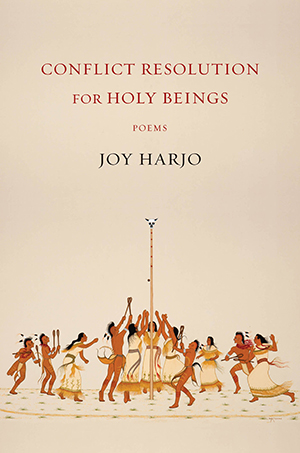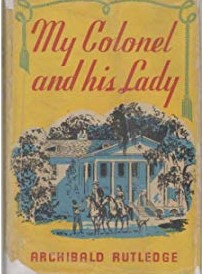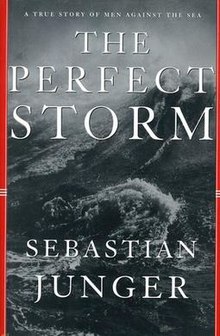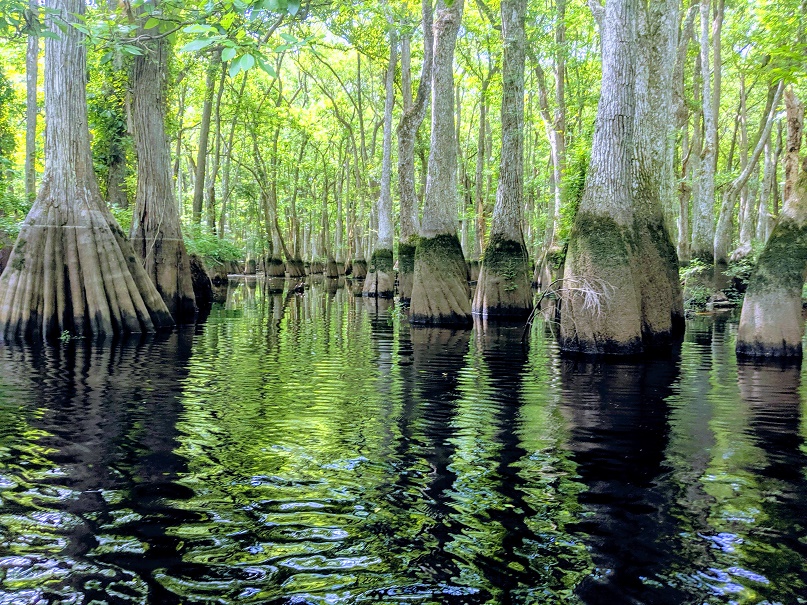A little over a month ago, I attended the closing session of the Pat Conroy festival. Most of the events were held in Beaufort, SC, but the closing one was held in Bluffton, which is just across the river a bit from Savannah. It featured four South Carolina authors talking about place. Afterwards, I picked up a couple more John Lane books, who was one of the authors. I’d previously read two of Lane’s books: My Paddle to the Sea and Waist Deep in Black Water.
John Lane, Coyote Settles the South (Athens, GA: University of Georgia Press, 2016), 186 pages.
The first coyote I saw was thirty-some years ago outside of Virginia City, Nevada. Since then, I have seen them in many other parts of the West, but also in areas far beyond their original range. At one point, coyotes only existed in the American West. As their territory changed, the adapted and began to move eastward. In this book, which is kind of a travel narrative, Lane sets out across the South to learn about how coyotes are adapting to their new territories in the southern part of the country. These animals are taking place of the red wolves, who used to roam eastern woods. They are generally hated, in the same category that rattlesnakes are hated, as they are considered a threat to humans and especially to our pets. While there has been human death to coyotes (there was one during his study of the animal), the animal is very problematic for pets, especially small dogs and cats. They help cull the deer population (they prefer to eat fawns), love fruit, but will also eat armadillos (flip ‘em over and eat ‘em on the half shell). As the coyote is well established and able to reside close to humans, it appears there will be no going back. The beast is a hard one to trap, as one famous coyote from West Virginia showed. This animal was even known to relieve himself right next to traps set out for him as if he was playing with his trappers. After figuring out that it was a male, they finally trapped him using a captive female coyote in heat!
In addition to discussing the coyote, Lane spends time talking about the red wolf, as specie that is in even more danger from the coyote, for the two species have been known to interbred. By the time I got through this book, I find myself having more respect for the coyotes. Lane begins the book describing the first time he heard them at his house in northwest South Carolina. Having been surprised to hear them baying in the woods while out at night skiing in Michigan, I can attest, it’s a beautiful but also hair-raising sound. Pick up this book if you’re interested in nature and in an animal that is a lot cleverer than the cartoon depiction of Wile E. Coyote.
 John Lane Abandon Quarry (Macon, GA: Mercer University Press, 2010), 169 pages.
John Lane Abandon Quarry (Macon, GA: Mercer University Press, 2010), 169 pages.
This is a wonderful collection of poems that capture places and events (real and imagined) in Lane’s life. The author has a keen vision for what’s happening around him, as he travels from Cumberland Island along the Georgia coast to the Virginia mountains and places in between. The bulk of the book are made up of selections from seven previously books of poetry published by Lane. In addition to these seven, there are new poems, some from earlier in his life and others written more recently. Many of the imagined poems were about visits from his father who’d committed suicide when Lane was a child. His father, a veteran of World War II, was a mechanic who ran a gas station. In these “dreams,” he teaches his son about cars and his mother (and women) among other things. I imagine it was helpful for Lane to write these verses. I was shocked to find a poem, “Chicory Brought Inside,” that ties together chicory and Queen Anne’s Lace, two common roadside flowers that often grow together along the ways of the Midwest. It reminded me of a similar poem I wrote years ago. A place I discovered that we’ve both written poems is “Connemara,” the vacation home for Carl Sandburg in the North Carolina mountains. I am still trying to find my poem, which was written in the early 80s. I enjoyed this book of poems immensely and highly recommend them.
Chicory and Lace
by Jeff Garrison, 2009
A smile broke over your face.
You blushed as your eyes twinkled
when you noticed me watching
you raise the cup to your lips
and gently blow across the dark,
before sipping.
It was a chicory blend, wasn’t it?
Served early in the morning
at the sidewalk café
in that town along the Sierra foothills.
We searched for the ghosts of 49ers
yet couldn’t exonerate the spirits of our past.
We lingered that morning, I mesmerized by you,
sitting slightly sideways in a wrought iron chair,
a lacy-white sundress with blue flowers
that stood out against your tanned shoulders and arms,
and those long shapely legs, crossed at the knees,
a flip-flop dangling from your rocking foot
I don’t remember of what we talked,
nor now, even what year it was
for there have been so many since.
But I remember the chicory coffee and the lace of your dress
and seeing chicory grow wild along the roadside,
amongst the Queen Anne Lace, I smile.

 I picked up this book after learning that Joy Harjo has been appointed poet laureate for the United States. It’s exciting because she’s the first Native American to serve in this position. In addition to being a poet, Harjo is also a jazz musician. Her poetry blends music with longing for a home that seems evasive. In different poems, the reader is taken an “Indian school” in Oklahoma, to the hunting grounds of the Inuit people in northern Alaska, and through airports and other locals in between. She alternates between more free-form poetry to “prose poems.” Many of the poems draw the reader into the experience of modern Native Americans, who, having lost a homeland, are not sure where they belong. We also are reminded of the realities within Native communities of alcoholism and suicide. Yet, a thread of hope weaves through these poems, as we (as well as all creation) are encouraged to be blessing to others. I find her poems accessible and easy to understand. I’m sure I will reread many of them as I continue to ponder their messages. .
I picked up this book after learning that Joy Harjo has been appointed poet laureate for the United States. It’s exciting because she’s the first Native American to serve in this position. In addition to being a poet, Harjo is also a jazz musician. Her poetry blends music with longing for a home that seems evasive. In different poems, the reader is taken an “Indian school” in Oklahoma, to the hunting grounds of the Inuit people in northern Alaska, and through airports and other locals in between. She alternates between more free-form poetry to “prose poems.” Many of the poems draw the reader into the experience of modern Native Americans, who, having lost a homeland, are not sure where they belong. We also are reminded of the realities within Native communities of alcoholism and suicide. Yet, a thread of hope weaves through these poems, as we (as well as all creation) are encouraged to be blessing to others. I find her poems accessible and easy to understand. I’m sure I will reread many of them as I continue to ponder their messages. . In this short book, the former poet laureate of South Carolina, Archibald Rutledge, writes a memoir of his parents. His father had been the youngest colonel in the Confederate army. His father joined the war in North Carolina (the family kept a mountain home to escape to in the summer). He was wounded three times, involved in many engagements and served as best man for General Pickett, when he married. Archibald was the youngest child of the family (for which, his father often called him Benjamin, for Jacob’s last son). He was born in 1883, nearly twenty years after his father’s military experience had ended. Rutledge was in awe of his father, whom he saw as a kind, gentle, and loving man. His father shared with him the love of all things wild-hunting and fishing and just walking in the woods. He also shared his love of the creator whom he saw revealed in nature. His mother, the colonel’s lady, was also a kind but strong woman. As her husband was often away, she had to take control as she did directing the successful efforts at fighting a fire in the great house (when water had to be drawn from the river by buckets) and shooting to scare away intruders who were looking to steal from their rice barn. She also impressed the young Rutledge with her love of books and her care of others (she often served as a medical resource in a community that often had to go without physicians).
In this short book, the former poet laureate of South Carolina, Archibald Rutledge, writes a memoir of his parents. His father had been the youngest colonel in the Confederate army. His father joined the war in North Carolina (the family kept a mountain home to escape to in the summer). He was wounded three times, involved in many engagements and served as best man for General Pickett, when he married. Archibald was the youngest child of the family (for which, his father often called him Benjamin, for Jacob’s last son). He was born in 1883, nearly twenty years after his father’s military experience had ended. Rutledge was in awe of his father, whom he saw as a kind, gentle, and loving man. His father shared with him the love of all things wild-hunting and fishing and just walking in the woods. He also shared his love of the creator whom he saw revealed in nature. His mother, the colonel’s lady, was also a kind but strong woman. As her husband was often away, she had to take control as she did directing the successful efforts at fighting a fire in the great house (when water had to be drawn from the river by buckets) and shooting to scare away intruders who were looking to steal from their rice barn. She also impressed the young Rutledge with her love of books and her care of others (she often served as a medical resource in a community that often had to go without physicians).
